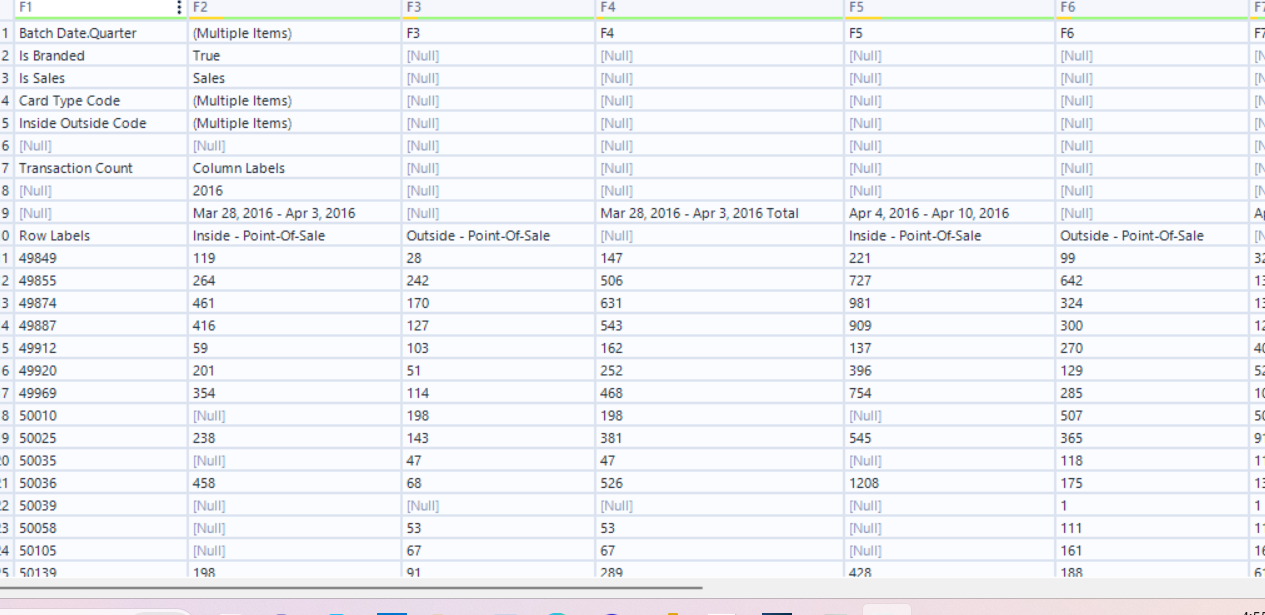You've just received a dirty data set and find yourself uncertain about which tools to use to clean it up. As you stare at a blank Alteryx canvas, attempting to discern the first step, here are some tips to guide you in tidying up a messy data set.

Visualize what your final results should look like.
The first step is to define the desired output. Mindlessly dragging tools in Alteryx won't lead you anywhere and may only cause confusion. To avoid this, carefully examine your data. For instance, in the provided data, clarify the objectives. This may include getting rid of null rows, transforming each row into a week for every row label, and designating each column as a point of sale.
Think about which tools can help achieve your goals.
Once the objectives are clear, consider the tools needed to accomplish them.
To eliminate null rows, utilize tools such as Sample, Select, or Data Cleansing to remove entire rows or columns or replace null values with zeros.
To restructure the data with weeks as rows and points of sale as columns, employ Transpose and Crosstab, alongside Dynamic Rename.
Keep the data as clean as possible at all times.
In this scenario, among the tools to be used, Transpose and Crosstab are the most intricate. Therefore, use Sample and Select tools initially to eliminate unnecessary rows or columns.
Think three tools ahead.
Recognize that each tool you use will alter the data. Instead of running the flow every time you add a new tool, visualize the tool's impact on the data. This way, when using the next tool, you already know what the dataset should look like.
Understand the function of each tool. Planning becomes more straightforward when you comprehend the purpose of each tool. Thinking ahead makes it feasible to reach the desired tool seamlessly, helping you organize the workflow and decide the sequence of tool usage.
Follow these four tips, and Alteryx will become easier to navigate.
